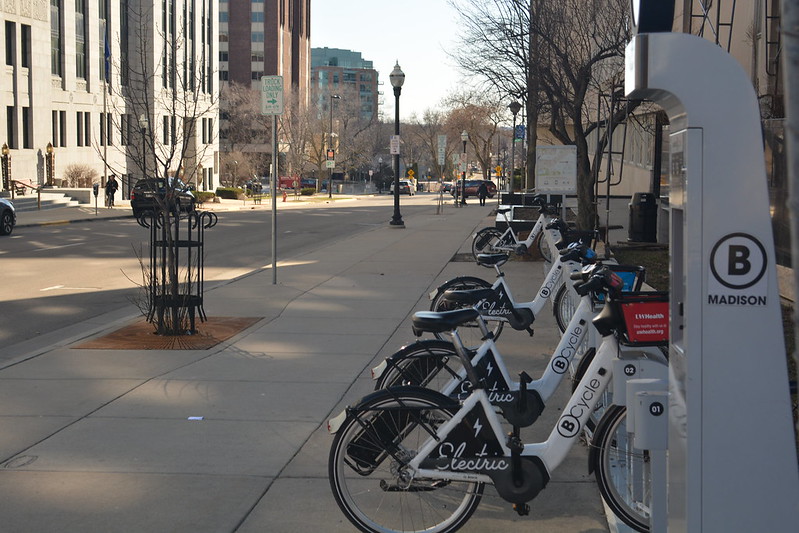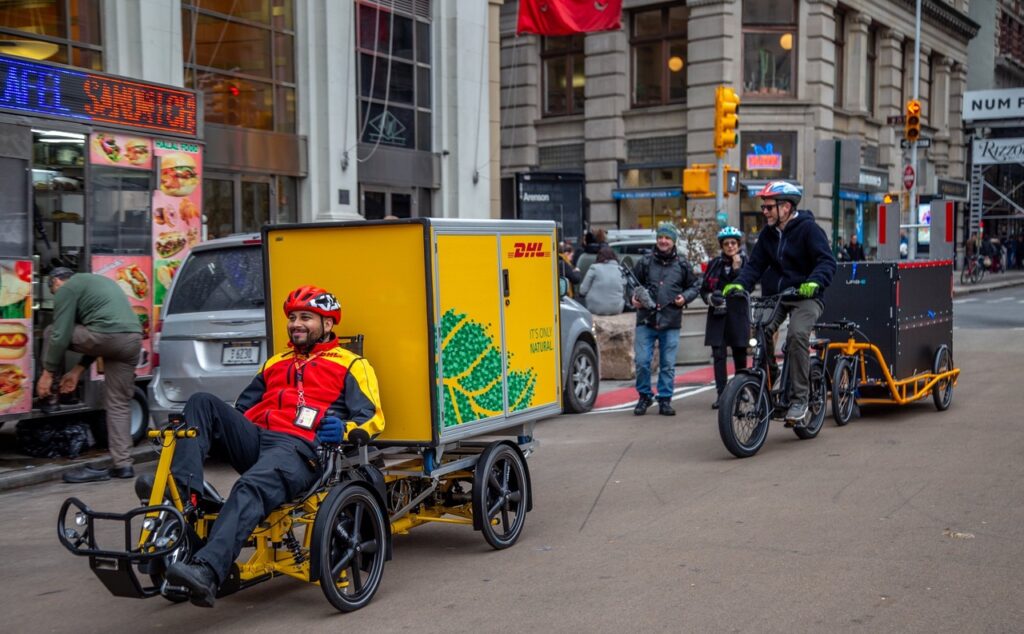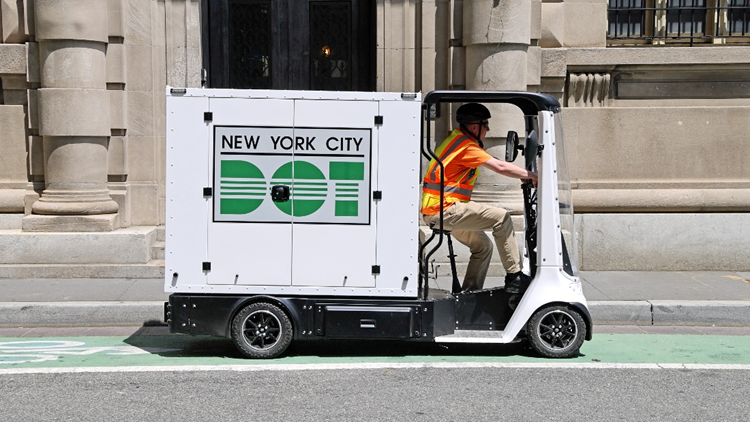
A smaller footprint for freight

Freight plays a valuable role in keeping our communities and local economies thriving, but heavy freight vehicles pose unique challenges to community roads and air quality. Fortunately, not all good things have to arrive in a diesel-powered package.
The following post was co-authored by T4A Policy Manager Corrigan Salerno and T4A Policy Intern Sam Packman.

The size of the vehicles on our roadways can make a big impact on our travel. Larger vehicles are harder on our roads, leading to an increased need for maintenance. Large freight vehicles, often diesel-powered, produce harmful emissions that have historically hurt marginalized communities the most. And the larger a vehicle is, the more likely a crash will result in a death, particularly for people walking. However, they also serve an essential purpose: carrying the goods we need.
Fortunately, efforts to address the size and carbon-footprint of freight vehicles are already making inroads across the country.
Reducing freight emissions
Because medium- and heavy-duty vehicles are major sources of both greenhouse gas emissions and toxic air pollution, reducing tailpipe emissions and oil use in this sector can support improved public health outcomes and help mitigate the climate crisis.
In our work co-leading the Coalition Helping America Rebuild and Go Electric (CHARGE), we advocate for policymakers to engage closely with communities most impacted by freight pollution and maximize benefits to create or maintain high-quality manufacturing jobs. Multiple groups in CHARGE are leading the way to help reduce medium- and heavy-duty vehicle emissions. Among them, the Electrification Coalition leads a consortium of industry partners toward freight electrification. CALSTART’s Trucks and Non-Road Vehicle Initiative supports faster adoption of low-emission, high-efficiency trucks and heavy equipment. Last year, the Environmental Defense Fund released a report to guide municipalities on how to form and evaluate Urban Freight Partnerships, stakeholder engagement groups that shape decision-making around urban freight.
CHARGE also supports policies that reduce distances traveled by larger freight vehicles while transitioning shorter, urban freight deliveries to electric micromobility, where applicable.
What does micromobility have to do with freight?
While large freight vehicles come in handy for long trips, when they make last-mile deliveries below full capacity, they produce just as many harmful tailpipe emissions as they do at full capacity. In these instances, cleaner, smaller, and safer microfreight options can help.

From more traditional electric bikes with space for cargo to new types of wider pedal assist bikes with semi-enclosed cabins and capacious holds, the flexibility of microfreight enables deployment in a variety of contexts. These vehicles can transport smaller amounts of cargo and thanks to their smaller size, they’re able to bypass road congestion, avoid clogging up the road themselves, and reduce wear on local roads. As an added bonus, the cost to charge e-cargo bikes can beat out fueling heavy vehicles.
Already on streets across the country, microfreight works well with a microhub model, where goods are first transported by traditional heavy- or medium-duty vehicles to an urban hub, then taken to their final destination. Learn more about how microfreight can support last-mile deliveries here.
Modernizing and improving the efficiency of our freight vehicles can support the nation’s efforts to maintain our roadways, improve traffic safety, and reduce harmful emissions. As innovations continue to move forward, policy will play a key role in ensuring efforts to reduce the most negative impacts of freight will succeed.



